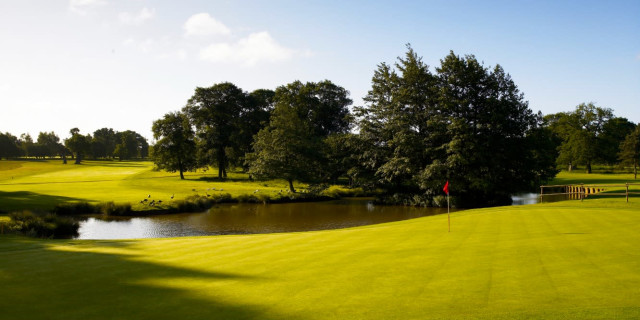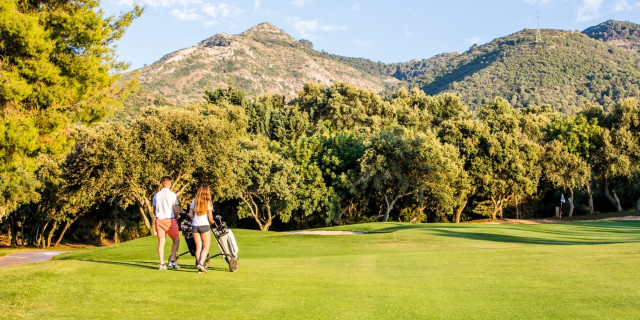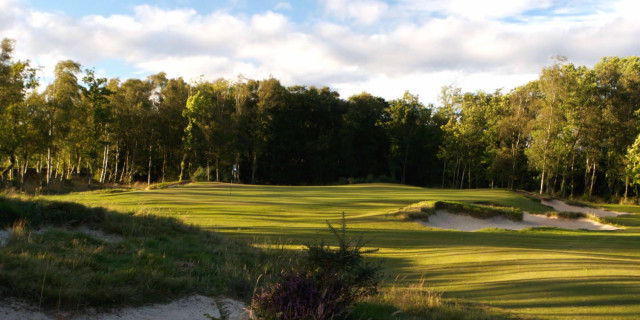Destination: Golf in Gran Canaria
Spain is so full of golfing treasures that it’s easy to overlook the Canary Islands as a viable destination for a golf break. The hoards of European tourists hopping across the Mediterranean often favour the Spanish mainland, and such is the quality of courses it’s impossible and short-sighted to question that decision. That said, the Canary Islands – a chain of 14 islands and one of Spain’s 17 autonomous communities – are continually rising in popularity, as golfing tourists around the world discover the distinctive joys of island golf in one of Europe’s most hospitable and amiable environments.
Distinguished
The Canary Islands archipelago is comprised of famed holiday havens such as Tenerife and Lanzarote, but it’s the chain’s third-largest island, Gran Canaria, that is currently playing the most prominent role in facilitating an increasing number of year-round golf tourists. At this year’s prestigious International Association of Golf Travel Operators (IAGTO) awards, Gran Canaria was voted European Golf Destination of 2013. Winning such an accolade in such a distinguished and competitive category – following in the footsteps of Fife in Scotland, North West Ireland and Andalucia in Spain - is a huge honour, and one that would only have been bestowed if it was truly deserving.
General info
Gran Canaria is the second most populous island of the Spanish archipelago, and is home to approximately 40% of the chain’s inhabitants. It is situated some 150 kilometres off the coast of northwest Africa in the Atlantic Ocean and often referred to as ‘Miniature Continent’, due to its microclimate and wide variety of differing landscapes. Indeed, a third of the island is under protection by UNESCO as a Biosphere Reserve.
Generally speaking, the climate is idyllic. Mountainous regions can be a touch cool, but an average winter daytime temperature of 20 degrees is more than enough to offset that. That figure rises to 22 degrees in spring and 27 degrees in the height of summer. June, July and Augusta are normally rainless, and, as a consequence, the population swells as tourists flock to the island to experience perfect environmental conditions.
 Golf
Golf
The weather is undoubtedly a huge draw, but so too is Gran Canaria’s diverse selection of championship-quality golf courses. There are seven 18-hole courses on the island, and one of them, Real Club de Golf de Las Palmas, is the oldest golf course in Spain.
The par 71 MacKenzie Ross design was inaugurated in 1981, and it presents a truly unique setting for golf. The course is positioned to the side of an old volcanic crater in the North of the island, and the glinting sea, dramatic landscape and selection of striking holes make Las Palmas one of the most popular courses on the island. Given the panorama, it’s easy to lose your concentration, but the narrow fairways, shrubbery-strewn barrancas and small greens require full attention. The 11th hole - a winding, downhill par-4 with out of bounds running all down the right - plays towards the sea, and is one of the most beautiful holes on Gran Canaria.
Some 10 miles to the south east of Las Palmas lies el Cortijo, the second course in the north of the island and a layout ranked number one in Gran Canaria by www.top100golfcourses.com. The courses is a tale of two nines, with the front nine possessing a links feel and the back side peppered with lakes. Slick, contoured greens and expansive sea-side views are a feature El Cortijo, and the series of palm trees and exquisite conditioning help establish a feeling of tropical luxury. Sergio Garcia won the Spanish Open here in 2002, just two years after the course opened for play. El Cortijo also boasts exemplary leisure amenities, including tennis and equestrian facilities and a spin-off nine-hole par-3 course.
The majority of Gran Canaria’s other courses are dotted around the south of the island, Lopesan Meloneras is set next to the ocean with the Canary Mountains on the one hand and the harbour of Pasito Blanco on the other with the par 71 layout integrated into the landscape whilst retaining the terrain’s natural beauty. For example, there are two holes where the golfer is forced to hit over the so called “barrancos” – the typical Canarian valleys formed of volcanic rocks.

Maspalomas is widely regarded as the region’s premier course. Another Mackenzie Ross design, the course is located next to the thriving beach resort of Playa de Ingles. It’s characterised by tropical vegetation, gentle sea zephyrs and numerous sand dunes that separate the fairways from the sea. At 6,800 yards, the course is relatively long, especially given that it only possesses three par 3s. One of those holes, the 154-yard 16th, is home to one of the course’s two lakes and presents a daunting yet visually appealing tee shot over water.
The two courses at Salobre Golf Resort and Spa also attract thousands of foreign golfers each year. The North was opened in 2008, some eight years after the original layout. The South – designed by Roland Favret – is a par 71, 6,700 yard track strewn with lava outcrops and exotic palm trees. The eclectic mix of par 3s range from 125 to 225 yards, with the 14th – a 205-yard hole played over a giant barranca to a tiny green – the pick of the bunch.

The great golf courses on Gran Canaria are complemented by a supreme selection of hotels and a sundry of accommodation offerings. From stunning five star resorts - such as the Seaside Grand Hotel, the luxurious Lopesan Villa del Conde and Riu Grand Palace – to private villas and self-catered bungalows, you’ll be spoiled for choice when it comes to finding a place to stay.
Off-course
Aside from snorkelling, sunbathing and swimming, and of course golf, Gran Canaria is home to a whole host of other tourist attractions. The Rural Park of Nublo, the Normas Jungle and the Azuaje Ravine are all natural protected spaces, and the Dunes of Maspalonas – sandwiched between two idyllic beaches – present a wonderfully tranquil spot. Gran Canaria is also famed for its striking rock formations, a product of its volcanic landscape, and the Pico de las Nieves, at 6,400 feet, offers unbelievable views over the archipelago.
The island is also home to a number of quaint villages, including Puerto de Mogan, which is labelled ‘Little Venace’ because of its intricate network of canals. Other attractions include the botanical gardens in Tarifa Alta, the collection of 290 caves at Cenibo de Valeron and the beautiful cathedral square in Las Palmas, the island’s capital city.
Gran Canaria is a wonderful, all-encompassing destination that’s really starting to realise its golfing potential, and the IAGTO European Golf Destination of the Year award bears testament to that. With seven stunning golf courses, idyllic beaches, diverse landscapes and thriving nightspots, it’s a real haven for the discerning golf tourist.
For more information visit:
The golf courses in Gran Canaria listed, rated and reviewed on Golfshake
Related Content:
What do you think? post your thoughts and feedback on the Golfshake Forum: https://forum.golfshake.com/

















